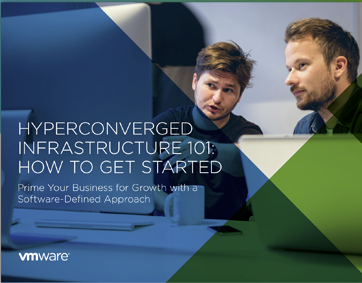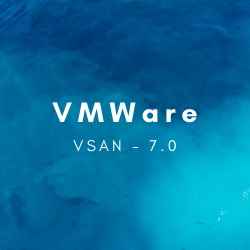In the previous blog we have seen the process of the vCenter server upgrade from vCenter 6.7 to vCenter 7.0, the next step is to upgrade ESXi 6.7 to ESXi 7.0. There are two methods available for us to perform upgrade of our existing ESXi 6.7 to ESXi 7.0.
- The first one is upgrading ESXi hosts by attaching the ISO image via respective consoles and perform the upgrade manually.
- The second method is upgrading ESXi hosts managed by vCenter server using the Lifecycle Manager.
Previously we use to perform the host upgrade using the update manager and in the vSphere 7.0, the update manager been replaced with Lifecycle Manager. You may look at my earlier article 7 Reasons to Upgrade to vSphere 7 – Series to understand high level point and vSphere Lifecycle Manager (vLCM) article to understand little bit more about the vSphere Lifecycle Manager (vLCM) component.
vSphere Lifecycle Manager comes with Declarative ESXi Cluster Management, Full Stack Firmware Updates, Simplified OEM Customization, Cluster QuickStart Workflow and Automatic Compatibility checks and specially support upgrade ESXi clusters using the desired state model which is part of Declarative ESXi Cluster Management.
With Lifecycle Manager enables you to have all hosts in a cluster receive the same image. This removes inconsistency of the images between hosts.
Please visit VMware Hardware Compatibility Guide to ensure the current hardware is supported to run vSphere 7 before starting the upgrading process of ESXi 6.7 to ESXi 7.0
Table of Contents
Import ESXi 7.0 ISO into Lifecycle Manager
Lets start with Logging into the vCenter Server -> Menu -> Lifecycle Manager.

As a next step we will be importing ESXi 7.0 ISO image into the lifecycle manager to create an upgrade baseline. This will be done by clicking Imported ISOs and Import the ISO image which downloaded from the VMWare Download portal.

This step will import the ESXi image under the imported ISO section of lifecycle Manager

Create Upgrade Baseline
Lets move to the next step . We will be able to locate ISO image of ESXi 7.0 Under the Imported ISOs. Now the time to create the upgrade baseline using the ISO. Click on New Baseline. Specify the name for the Baseline “ESXi 7.0 Baseline” in my case and description. Select the baseline type as “Upgrade”. Click Next.

In the next screen i selected the ESXi 7.0 ISO image which we have imported in the previous step. Click Next.

Click finish after reviewing the summary of the ESXi Upgrade baseline.

Attach Upgrade Baseline to Cluster
Once the Upgrade baseline is created, we need to attach the baseline to ESXi hosts or to the Cluster. In this case i am doing the ESXi hosts based upgrade which was previously 6.7 ESXi hosts. To attach the Baseline, Select Attach under Attached baselines.

Select the ESXi 7.0 Upgrade baseline which we have created using ESXi 7.0 ISO image. Click Attach.

Please proceed with checking compliance of ESXi hosts with baseline once the upgrade baseline is attached to the hosts , click on Check Compliance to check the compliance of attach Upgrade baseline with the hosts.

Once the compliance check is completed, it will start showing “Non-Complaint” for the hosts in the datacenter . Lets do the upgrade the ESXi hosts using the Upgrade baseline which we created earlier .

Remediate ESXi Hosts
You can remediate the entire cluster or individual ESXi hosts one by one like mentioned earlier .
In our case we are doing Host by Host approach and the upgrade process will place ESXi hosts into maintenance mode one by one and upgrade the ESXi 6.7 to ESXi 7.0 . Select the ESXi host -> Click Remediate

It will upgrade the ESXi 6.7 to ESXi 7.0. Once the upgrade is completed, the attached Upgrade Baseline will become “Compliant”. in the previous screens .
Now , we can the ESXi host is now running with ESXi 7.0 Build 15843807.

Once the Upgrade of ESXi hosts in the cluster is completed, Status of the ESXi hosts becomes “complaint” for the attached baseline.
Its simple isn’t it our hosts are now upgraded from ESXi 6.7 to ESXi 7.0 using Lifecycle Manager . See you in the next blog .

